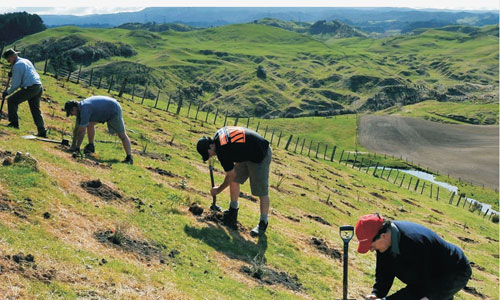This project showcased GG International’s ability to tackle cutting-edge legal issues at the intersection of climate policy, property law, and indigenous land rights. While the Government of New Zealand declined to implement the legal separation of carbon rights at the time, our strategic legal innovation shaped future dialogue on carbon securitisation, offering a clear path forward for other jurisdictions seeking to develop carbon markets on robust legal foundation
— New Zealand —
visionary. strategic. foundational.












Pioneering Carbon Rights Law Reform in New Zealand: Strategic Legal Frameworks for Carbon–Tree–Land Separation under Kyoto Protocol Commitments
"The Government of New Zealand, in response to the Kyoto Protocol, faced a critical legal challenge—how to enable carbon trading in a legal framework where title to trees and land were already partially separated. GG International's work proposed a world-first legal concept for carbon rights separation."
— GG International Legal Advisory Team, 2009
Challenge
As part of its commitment to the Kyoto Protocol (1997), the Government of New Zealand moved to operationalize a national carbon market through the New Zealand Emissions Trading Scheme (NZ ETS). Two key state-owned enterprises—Electricity Corporation of New Zealand (ECNZ) and Forestry Corporation of New Zealand (FCNZ)—were at the forefront of this effort, tasked with exploring mechanisms to enable carbon credit generation from forest assets.
The central legal barrier was clear: New Zealand’s legal framework did not recognize carbon sequestration rights as a separate, tradable property interest. While New Zealand had already legally distinguished title to growing trees from title to the land—particularly in recognition of Māori land ownership and third-party tree planting investments—there was no precedent for separating carbon rights from either trees or land.
Strategy
GG International was appointed over June to December 2009 by ECNZ and FCNZ to lead a comprehensive legal analysis and draft potential legislative instruments. Our strategy involved:
- Innovating Property Law: Building on the established legal separation between land and tree ownership, GG International proposed a novel legal framework to treat carbon rights as a third, distinct form of title—legally separable from both land and biomass.
- Developing Legal Instruments: Drafted model legislation and registration frameworks to formally recognize and securitise carbon rights, allowing them to be owned, transferred, and used independently of land or forest title.
- Aligning with Kyoto Objectives: Ensured compatibility with international obligations, domestic forestry policy, and the strategic needs of the two state-owned clients.
- Securing Client Endorsement: Both ECNZ and FCNZ agreed with and endorsed GG International’s proposed model as a feasible and forward-looking solution for enabling carbon trading.
Transformation
While GG International’s proposed legal model was recognized as groundbreaking and fully supported by the state-owned enterprises involved, the New Zealand Government ultimately chose not to adopt the legal separation of carbon rights at that time. Nevertheless, the project:
- Demonstrated Legal Feasibility: Proved that it was legally and technically viable to create carbon rights as a new property class, paving the way for future policy options.
- Laid the Foundation for Future Reform: The concepts developed became influential in subsequent international debates on carbon asset structuring and emissions trading architecture.
- Advanced Legal Thought Leadership: GG International’s work remains an important precedent in the evolution of environmental property law, illustrating the complexity of aligning climate instruments with existing legal frameworks.